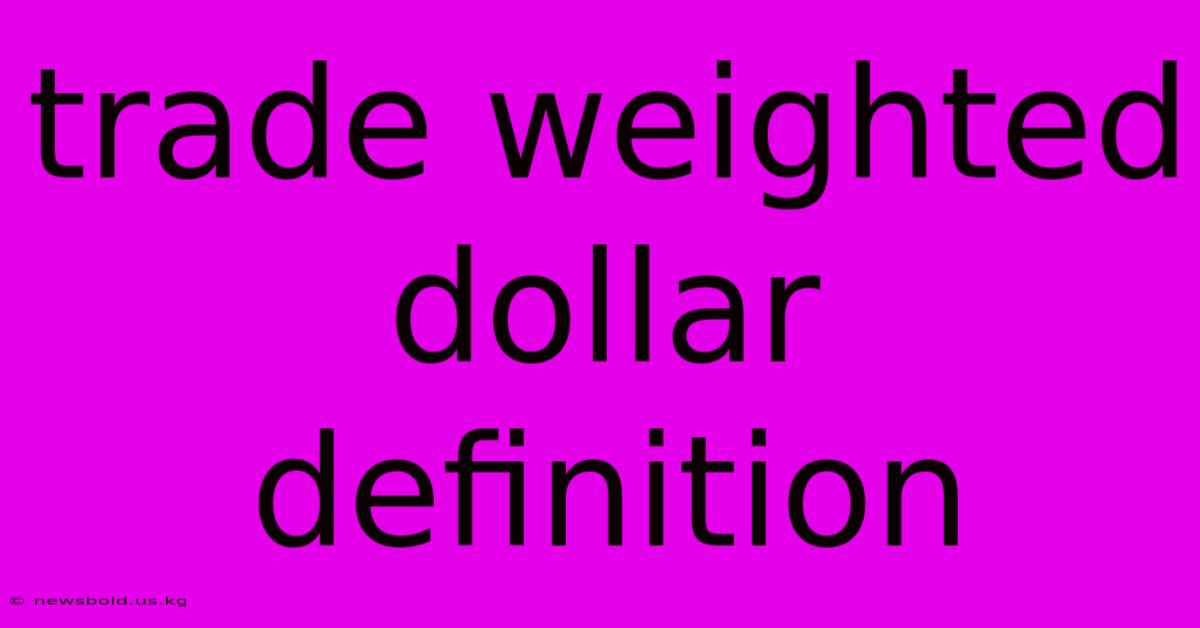Trade Weighted Dollar Definition

Discover more in-depth information on our site. Click the link below to dive deeper: Visit the Best Website meltwatermedia.ca. Make sure you don’t miss it!
Table of Contents
Unveiling the Trade-Weighted Dollar: A Deep Dive into Global Currency Dynamics
What dictates the global economic landscape, influencing everything from international trade to investment decisions? A significant player is the trade-weighted dollar, a powerful indicator reflecting the US dollar's value against a basket of other currencies. Understanding its intricacies is crucial for navigating the complexities of the global financial system.
Editor's Note: This comprehensive guide to the trade-weighted dollar was published today.
Why It Matters & Summary
The trade-weighted dollar (TW$), a key economic indicator, measures the value of the US dollar relative to a weighted average of other major currencies. Its fluctuations directly impact US international trade, influencing import and export prices. This article provides a detailed exploration of the TW$, including its calculation methodologies, influencing factors, and implications for businesses and investors. Keywords: trade-weighted dollar, US dollar index, exchange rate, international trade, currency valuation, global economics, monetary policy, inflation, economic indicators.
Analysis
The analysis presented here draws upon publicly available data from the Federal Reserve, the Bank for International Settlements (BIS), and other reputable financial institutions. Data series on exchange rates, trade volumes, and macroeconomic indicators were used to build a robust understanding of the TW

Thank you for taking the time to explore our website Trade Weighted Dollar Definition. We hope you find the information useful. Feel free to contact us for any questions, and don’t forget to bookmark us for future visits!
We truly appreciate your visit to explore more about Trade Weighted Dollar Definition. Let us know if you need further assistance. Be sure to bookmark this site and visit us again soon!
Featured Posts
-
Social Entrepreneur Definition And Examples
Jan 08, 2025
-
What Is Asset Protection Trust Apt Definition And Purpose
Jan 08, 2025
-
Twit Pitch Definition
Jan 08, 2025
-
Variation Margin Definition Calculation Examples
Jan 08, 2025
-
Associate In Personal Insurance Api Definition
Jan 08, 2025
